Prague Spring Knife Exhibition 2023
This year’s Prague Spring Knife Exhibition was on 4 April, only two weeks after the Brno knife exhibition. The Prague show was held in the traditional venue, the New Town Hall. For me, the Brno and Prague spring exhibitions are the ultimate sign that the winter is over.
Text and photographs: Martin Helebrant
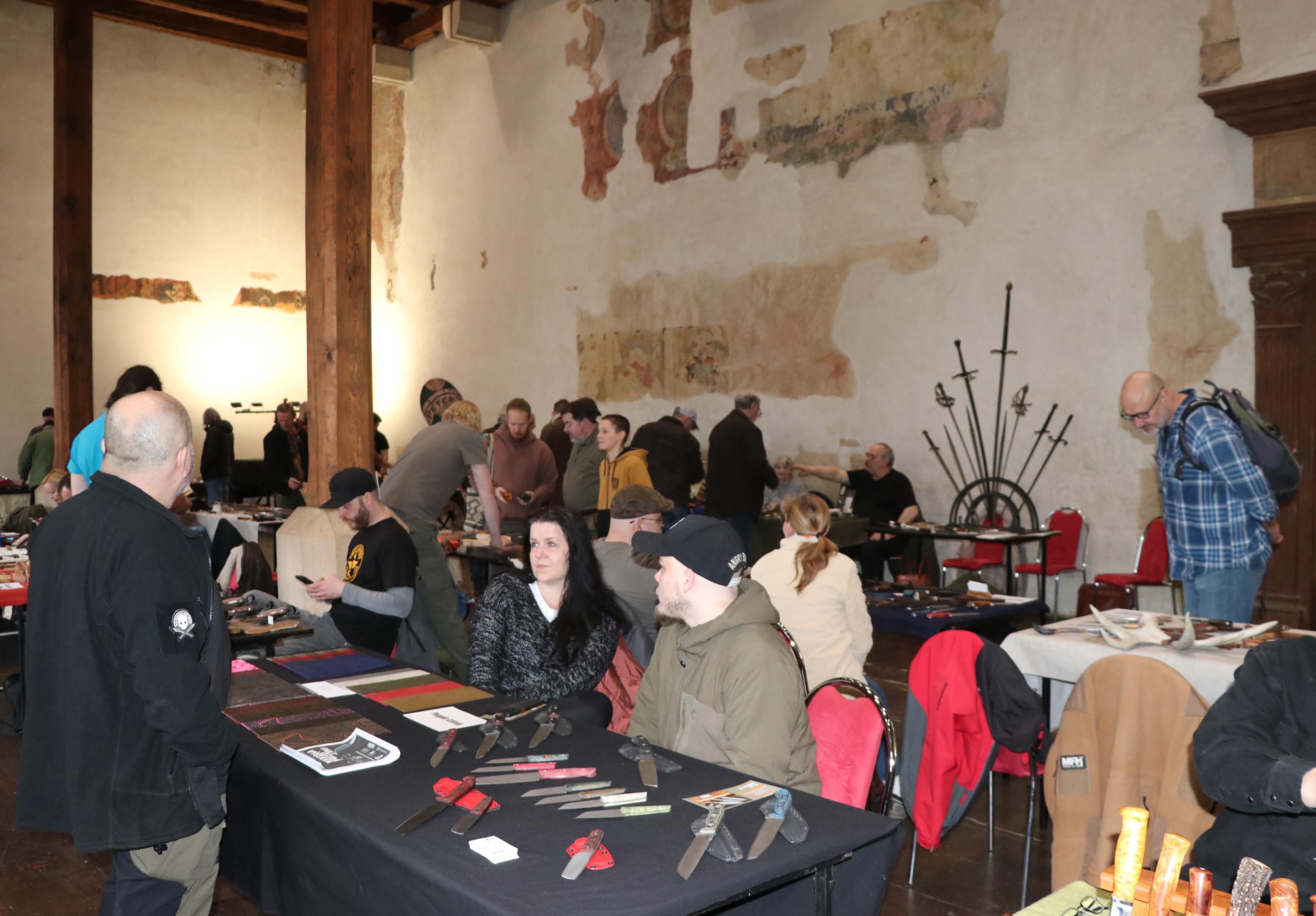
A last chat before the exhibition opens to the public.
Both exhibitions are similar but also different, maybe as a reflection of the personalities of the organizers. The Brno exhibition usually has quite a number of high grade knives, on the edge of sculptures, decorated by a deep relief and engravings The Prague exhibition is usually a parade of perfectly mastered craftmanship.
This year, however, the Prague exhibition stepped out of its usual path. First, some knifemakers that were present in Brno also came to Prague. As the time between the two exhibitions was short, the offerings on their tables did not change much, if a bit. Second, this year’s Prague shows was visited by Richard Tesařík with his wife, who are known to make - if not sculptures then definitely artistic artefacts with clear lines. These artefacts also provide the cutting function. With Tesařík’s also arrived Josef Rusňák. Mr Rusňák is recognized as a master of high grade, his skills are in par with the skills of Tesařík’s, or Bojtoš and other master artists. Still Mr Rusňák has his own, clearly recognizable style. Both Tesařík’s and Rusňák stand on absolute mastering of craftmanship.
As an example, I would like to point to Rusňák’s folding knife ‘Fish’. The blade is decorated with four golden pins acting as aid for opening and is locked by a back lock. The handle is inlaid with mother of pearl and turquoise – watery materials. The motif of golden pins is repeated on the handle spine.
Tesařík’s and Rusňák were not alone. Max Netrval stepped to the area of a deep cut relief of a fishing bear on the antler handle of his knife. The Prague show was also attended by two top grade Hungarian knife makers – Attila Kertész (who’s ‘Black Dragon’ in shown in the article on KNIFE 2023 in Solingen) and Attila Konoly. They brought in perfect knifemaking skills in Hungarian style which merge simple, functional design and precise, accurate execution.
Filip Kurota also presented perfect folding knife making skills. I am personally fascinated by the broad spectrum of shapes of Kurota’s knives which still clearly bear the characteristic style of his work. This clearly recognizable style is equal to the style of Miroslav Pouzar. With the latter I recently notice a slight shift in style and the Prague exhibition seemed to confirm it. A fixed blade knife with grip made of ostrich’s claw is undeniably Pouzar like, no matter that in fact is does step out of the frame of his previous production.
Both exhibitions are similar but also different, maybe as a reflection of the personalities of the organizers. The Brno exhibition usually has quite a number of high grade knives, on the edge of sculptures, decorated by a deep relief and engravings The Prague exhibition is usually a parade of perfectly mastered craftmanship.
This year, however, the Prague exhibition stepped out of its usual path. First, some knifemakers that were present in Brno also came to Prague. As the time between the two exhibitions was short, the offerings on their tables did not change much, if a bit. Second, this year’s Prague shows was visited by Richard Tesařík with his wife, who are known to make - if not sculptures then definitely artistic artefacts with clear lines. These artefacts also provide the cutting function. With Tesařík’s also arrived Josef Rusňák. Mr Rusňák is recognized as a master of high grade, his skills are in par with the skills of Tesařík’s, or Bojtoš and other master artists. Still Mr Rusňák has his own, clearly recognizable style. Both Tesařík’s and Rusňák stand on absolute mastering of craftmanship.
As an example, I would like to point to Rusňák’s folding knife ‘Fish’. The blade is decorated with four golden pins acting as aid for opening and is locked by a back lock. The handle is inlaid with mother of pearl and turquoise – watery materials. The motif of golden pins is repeated on the handle spine.
Tesařík’s and Rusňák were not alone. Max Netrval stepped to the area of a deep cut relief of a fishing bear on the antler handle of his knife. The Prague show was also attended by two top grade Hungarian knife makers – Attila Kertész (who’s ‘Black Dragon’ in shown in the article on KNIFE 2023 in Solingen) and Attila Konoly. They brought in perfect knifemaking skills in Hungarian style which merge simple, functional design and precise, accurate execution.
Filip Kurota also presented perfect folding knife making skills. I am personally fascinated by the broad spectrum of shapes of Kurota’s knives which still clearly bear the characteristic style of his work. This clearly recognizable style is equal to the style of Miroslav Pouzar. With the latter I recently notice a slight shift in style and the Prague exhibition seemed to confirm it. A fixed blade knife with grip made of ostrich’s claw is undeniably Pouzar like, no matter that in fact is does step out of the frame of his previous production.

The sharpness of a blade can be tested on a dry ham. The Cudeman knives passed well.
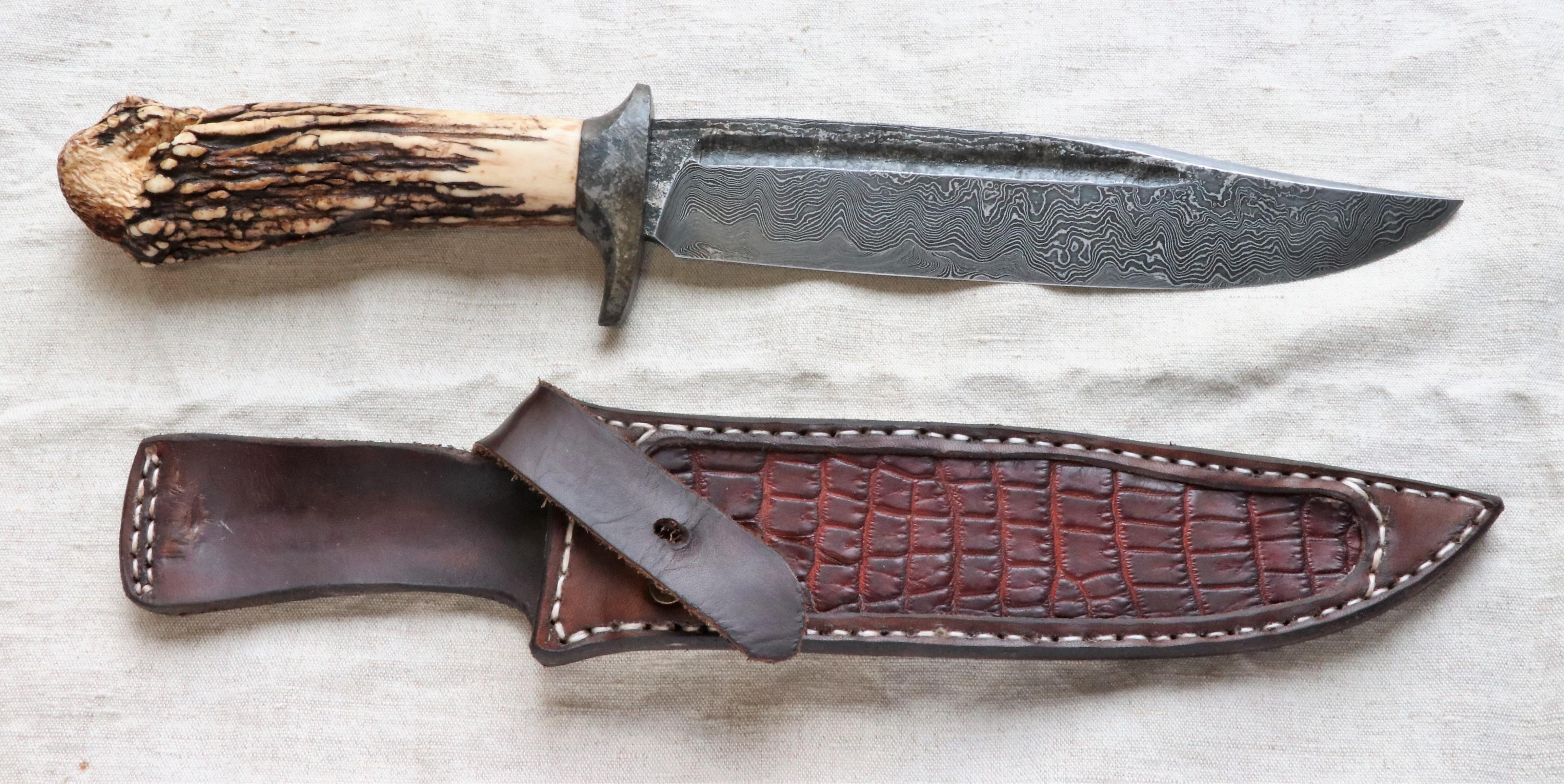
A hunting knife by Max Netrval. The 215 mm blade is carbon Damask, the handle is Antler. Overall length
is 317 mm.
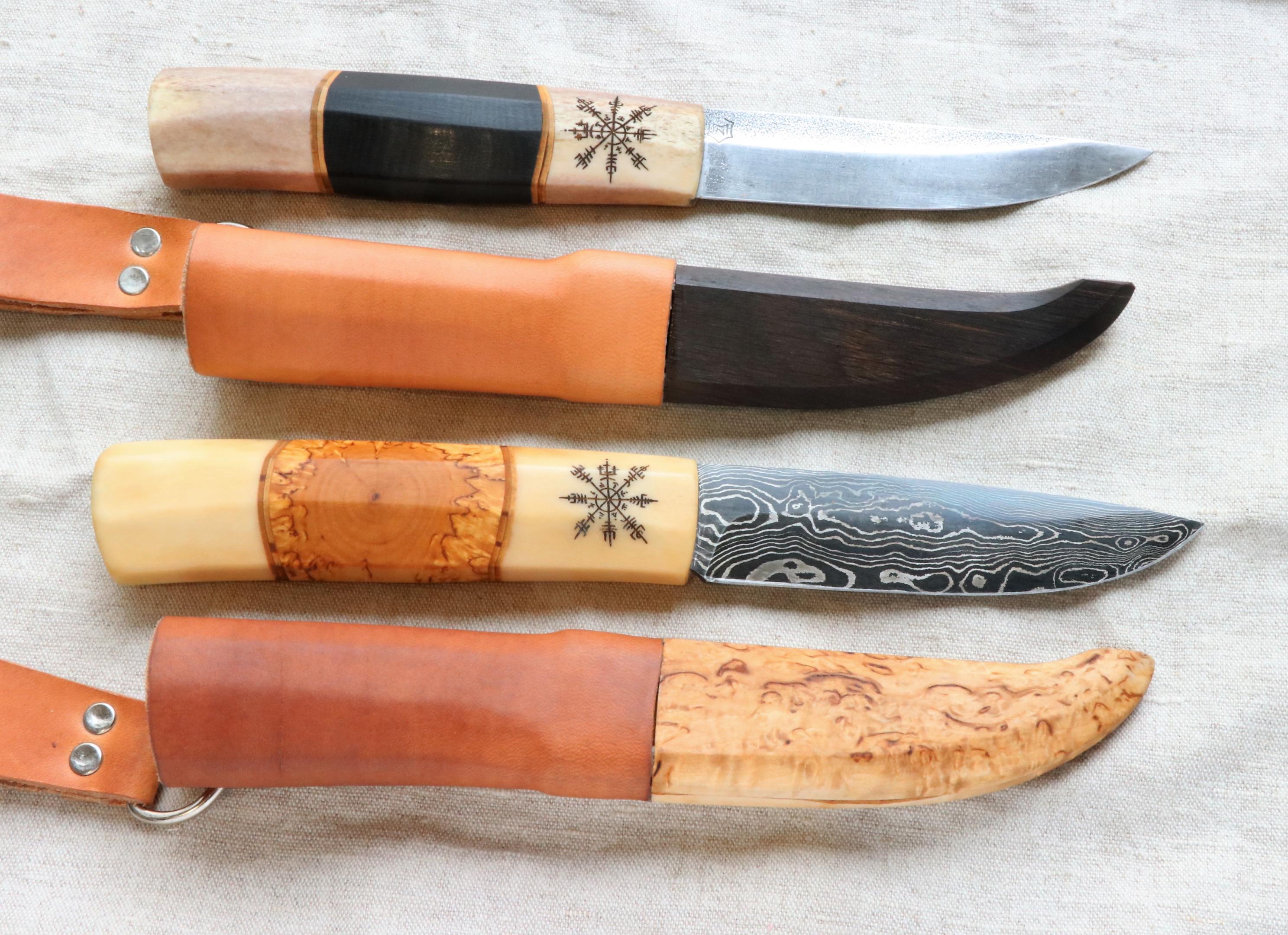
Two puukko-style knives by Max Netrval. The blades are N690 (top) and Carbon Damask. The handles
are Reindeer antler and Ebony (top) and Reindeer Antler and Karelian Birch.

A fixed blade by Miroslav Pouzar. The blade is R2 + N690 Damask, the handle is Ostrich, Olive and Maple.
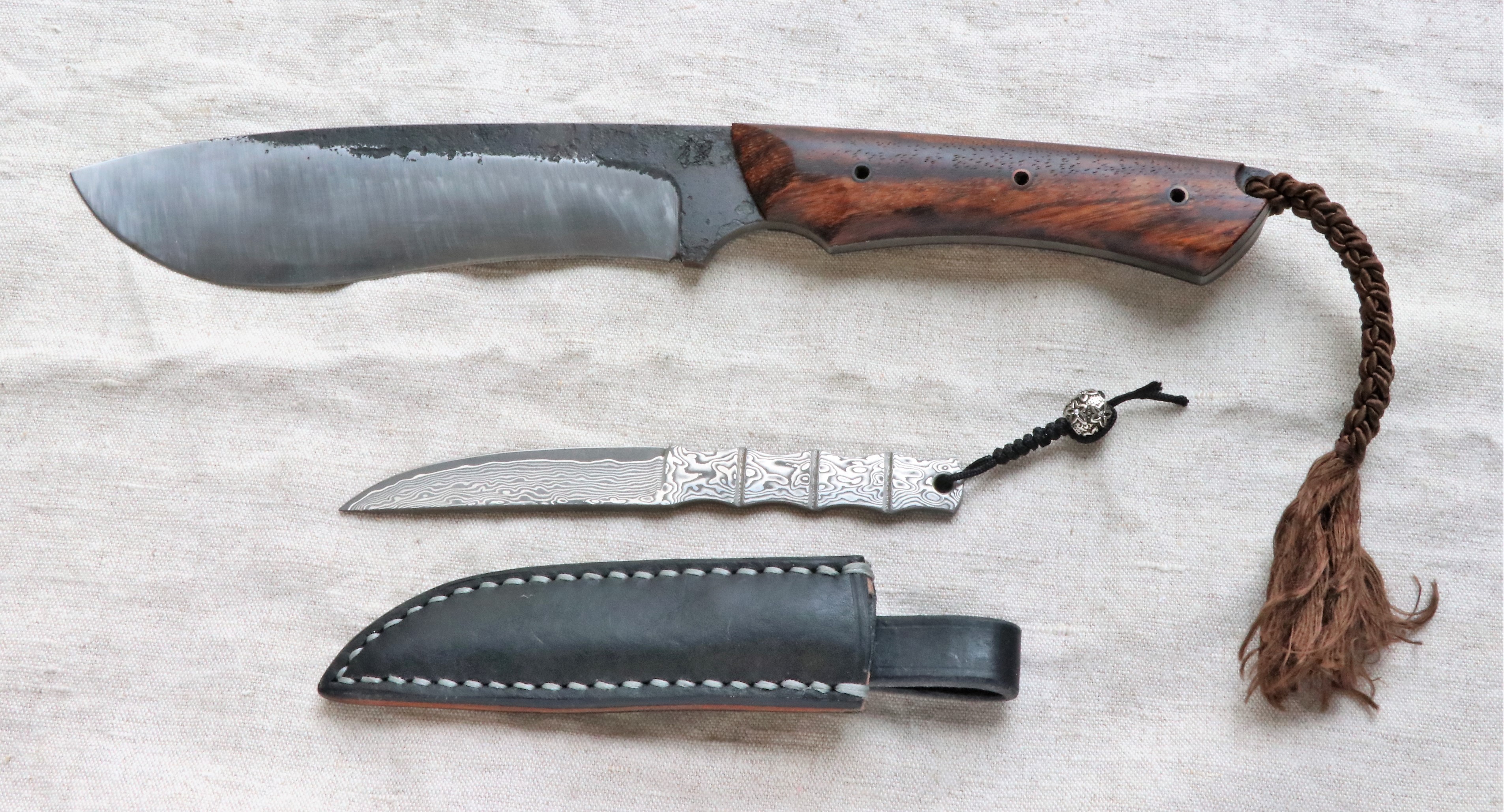
Two fixed blades by Radim Dachs. The large knife has a 165 mm blade from 12 060 and a Zebrano
handle. The smaller knife measures 145 mm overall.
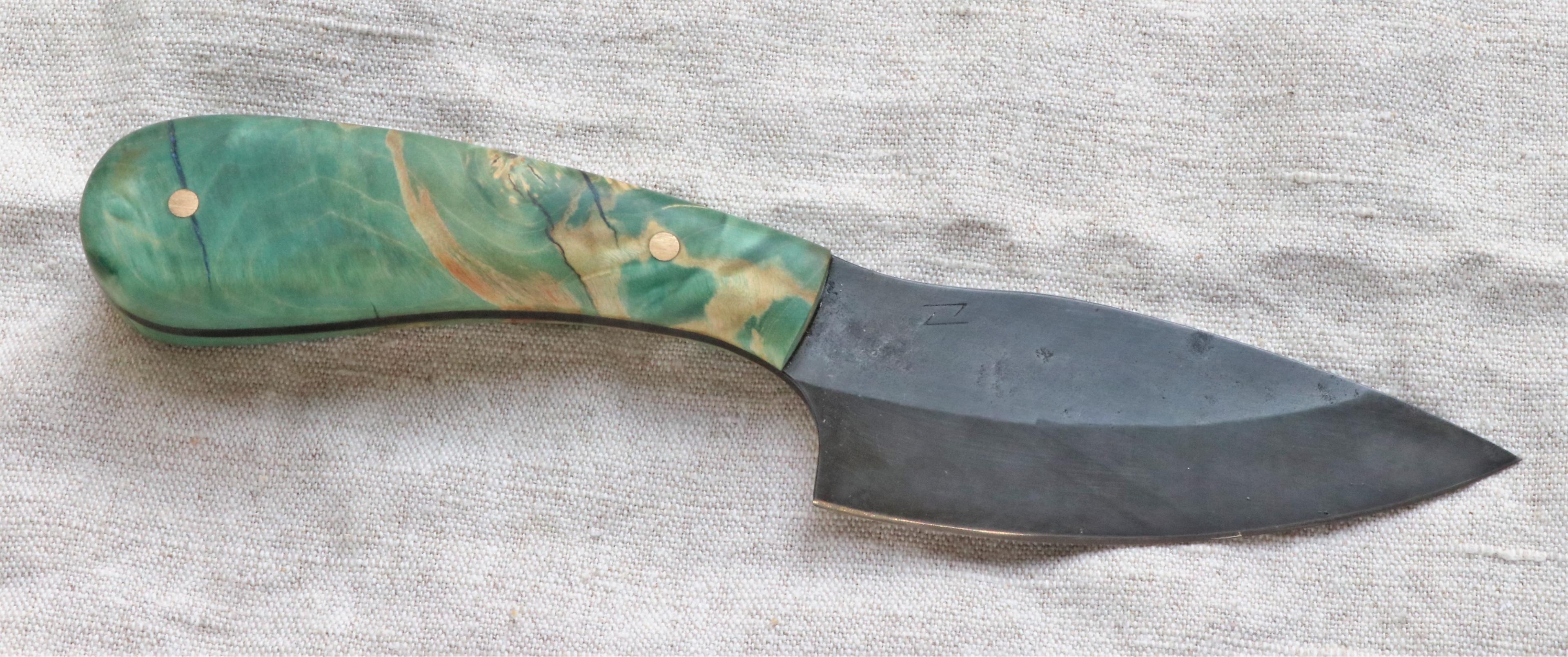
Two knives from Václav Kořínek. Both have a 19 418 blade. The upper knife measures 195 mm and has a
Maple handle, the lower knife has an overall length of 190 mm and has a handle from Corian and Epoxy.
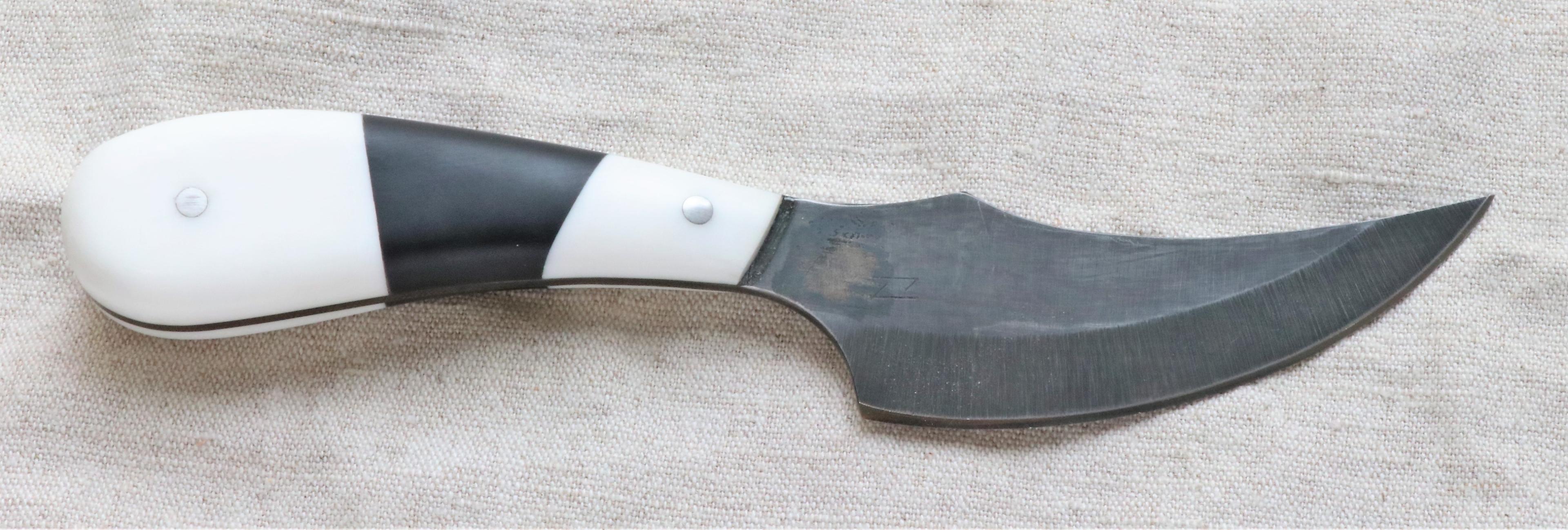
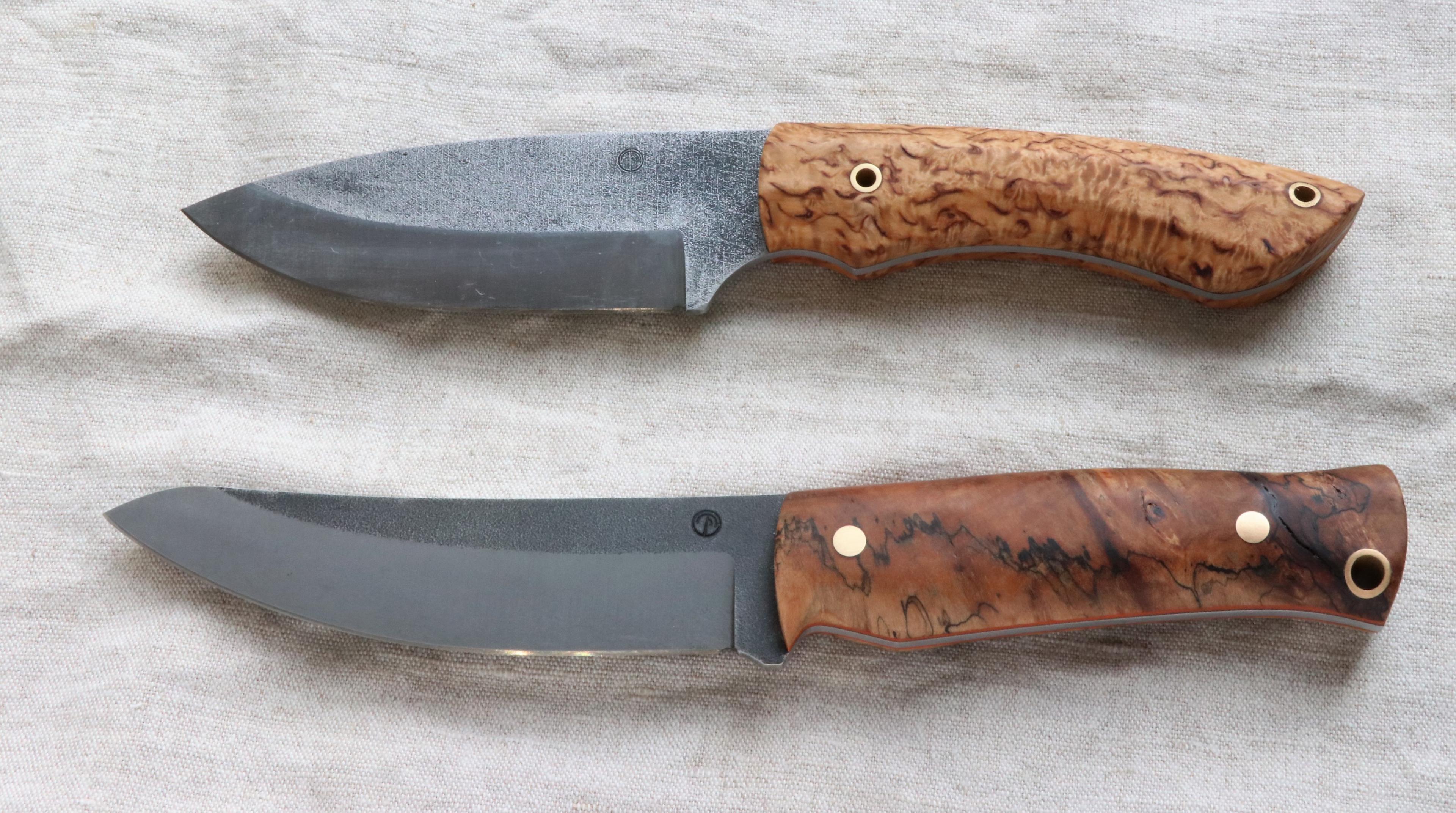
Two knives from Tomáš Fryč. The upper knife has a 130 mm blade from N690 and Lindy handle. The
lower knife has a 117 mm blade from K720 and a Birch handle.
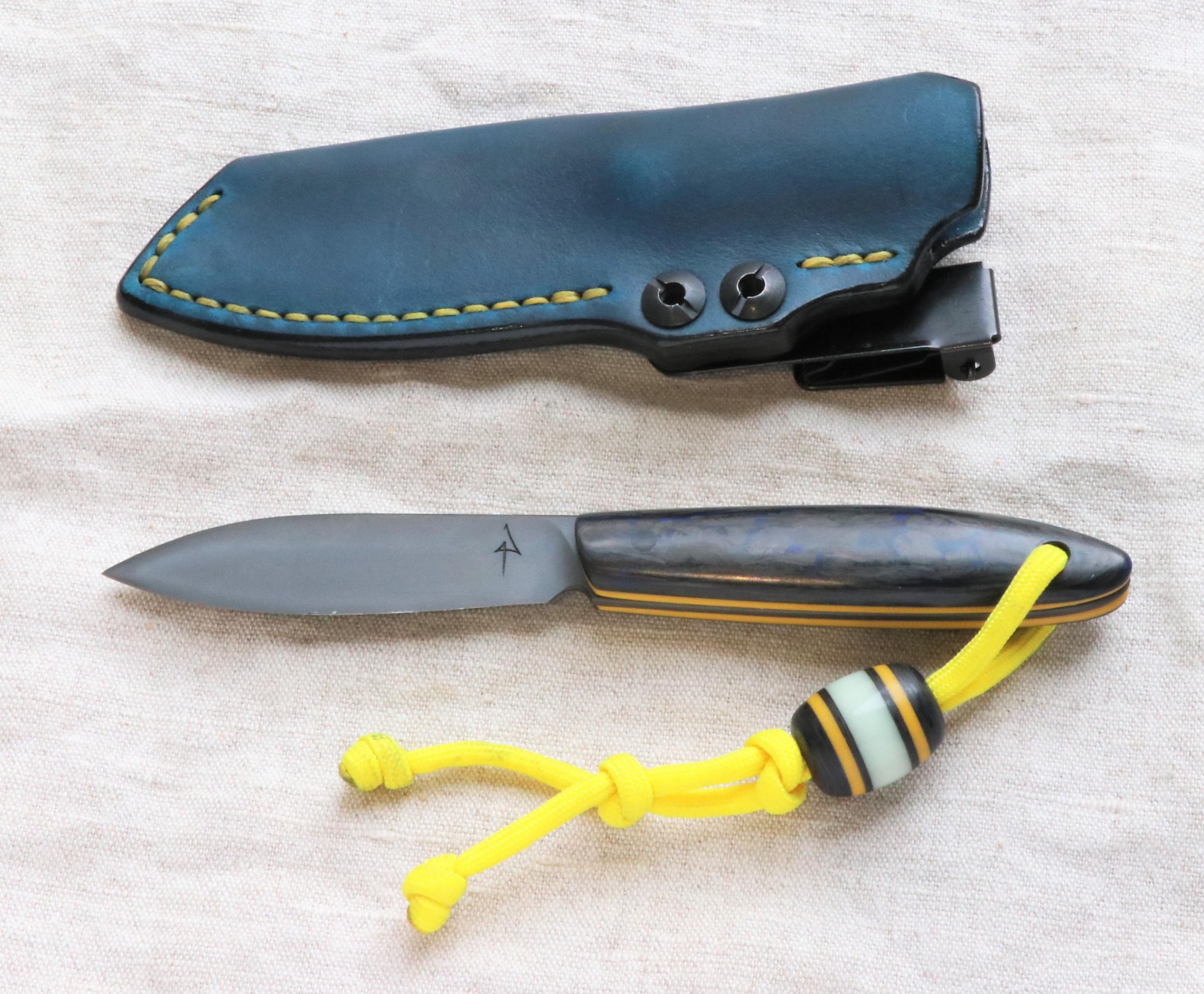
A fixed blade from Josef Pilch with a 75 mm RWL34 blade and G10 and Carbon Composite handles.
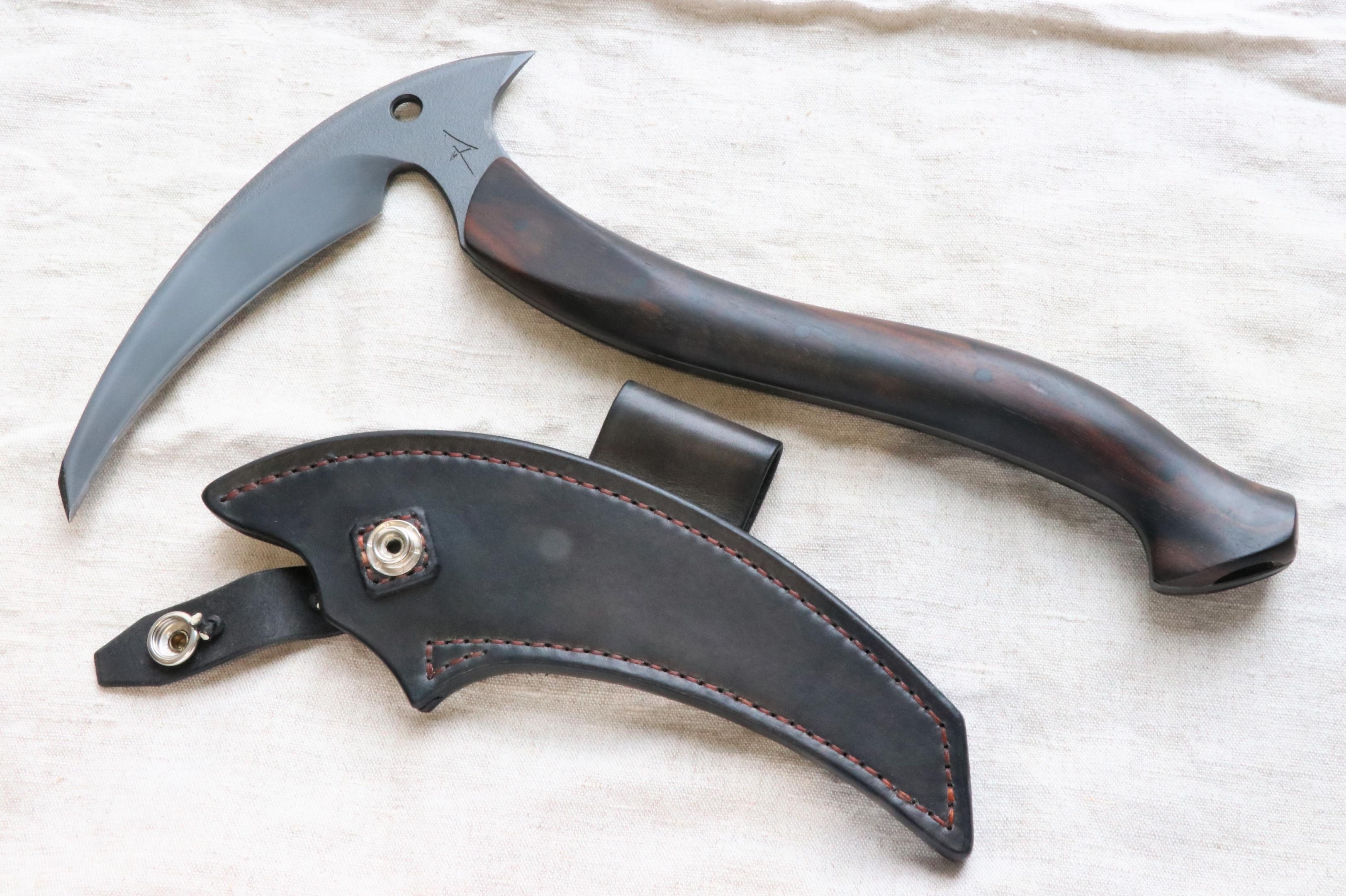
A remarkable cutting tool, like a smallish scythe, from Josef Pilch, with a 120 mm D2 blade and Zurikote
handle. Overall length is 305 mm.
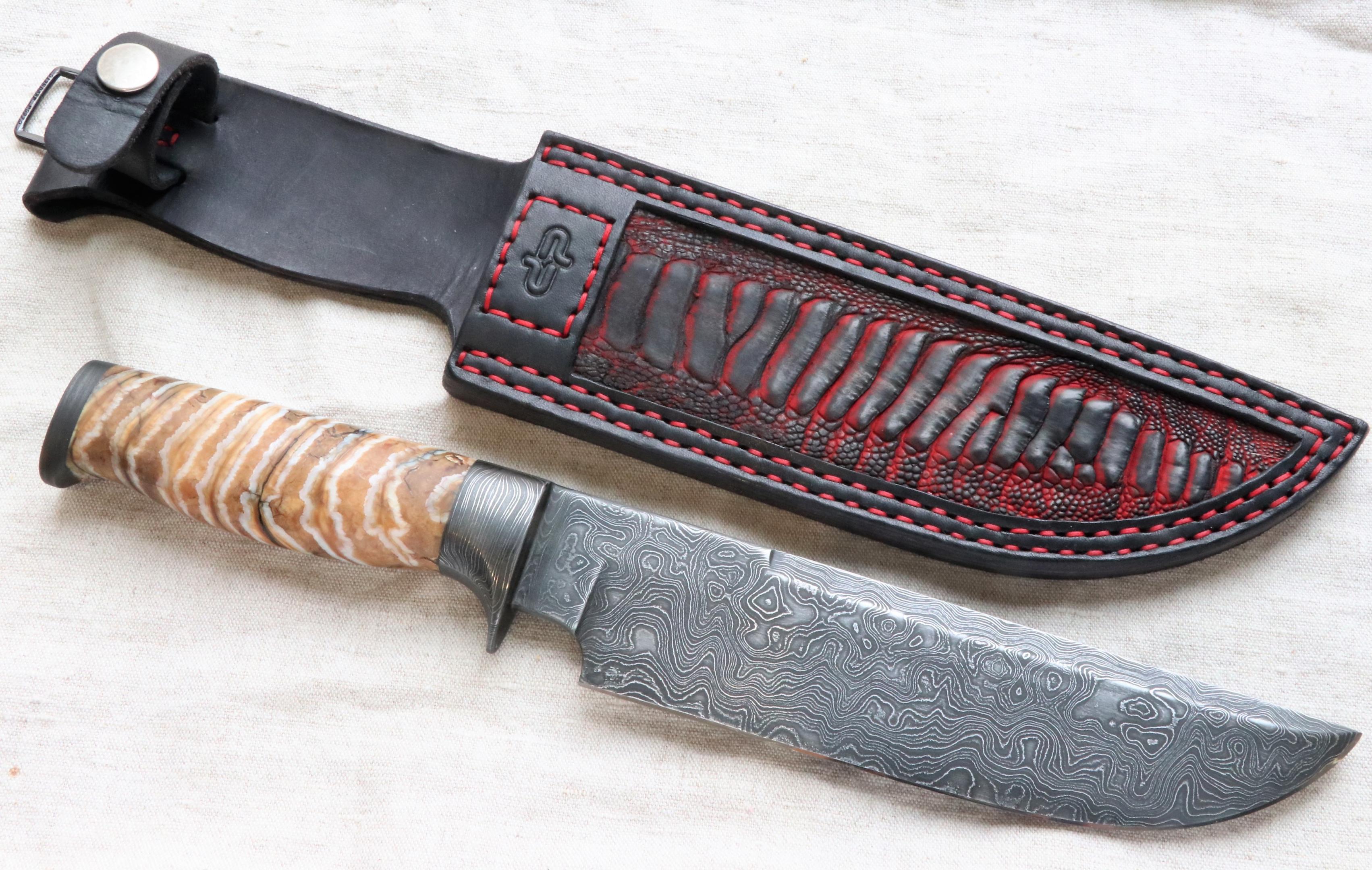
A fixed blade from David Posselt. The 195 mm blade is Carbon Damask, the handle is Mammoth.
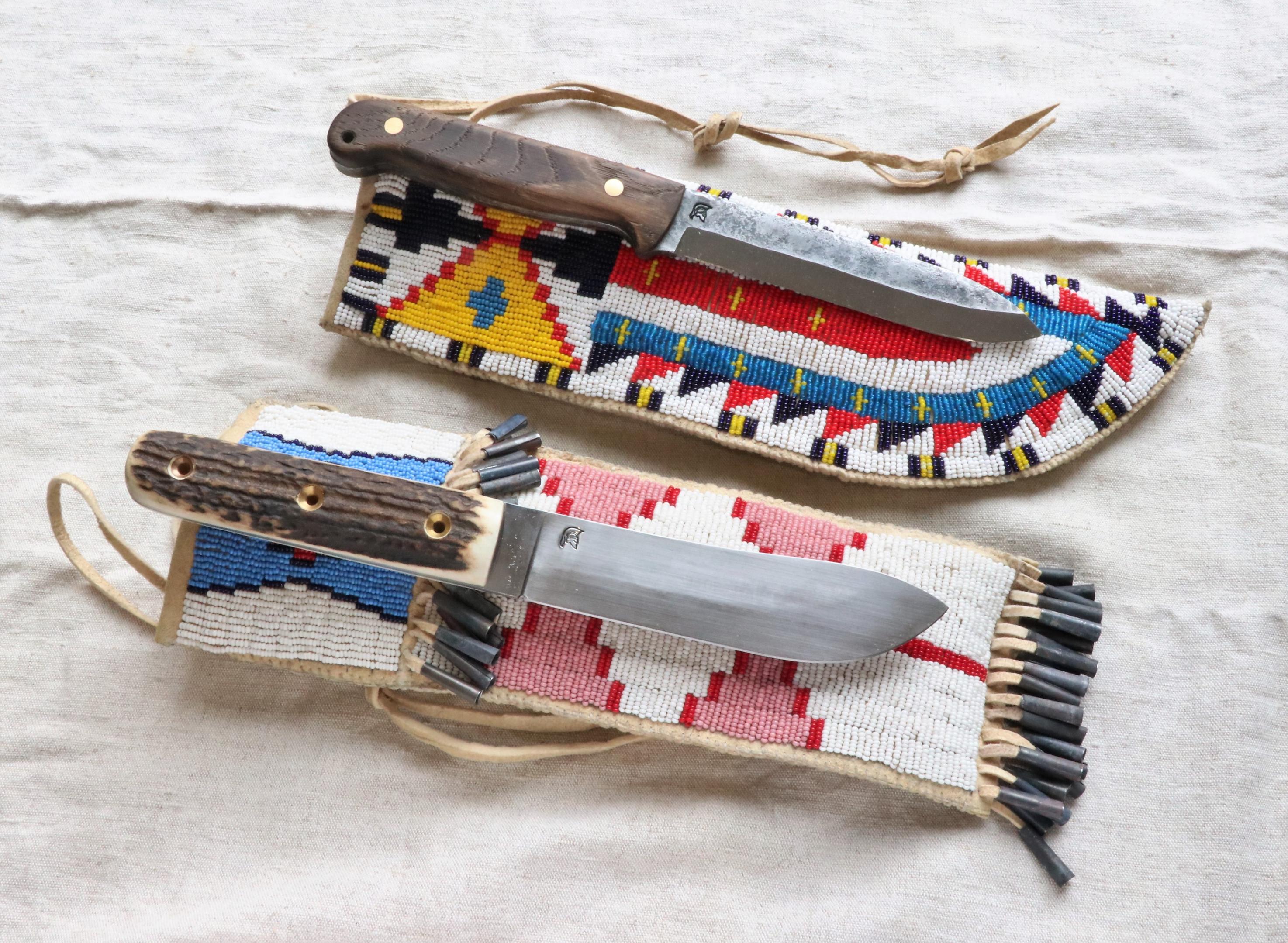
Two knives by Jiří Dvořák. Both have a 19 191 blade, and both have an overall length of 255 mm. The
upper knife has an Antler handle, the lower one has an Oak handle.
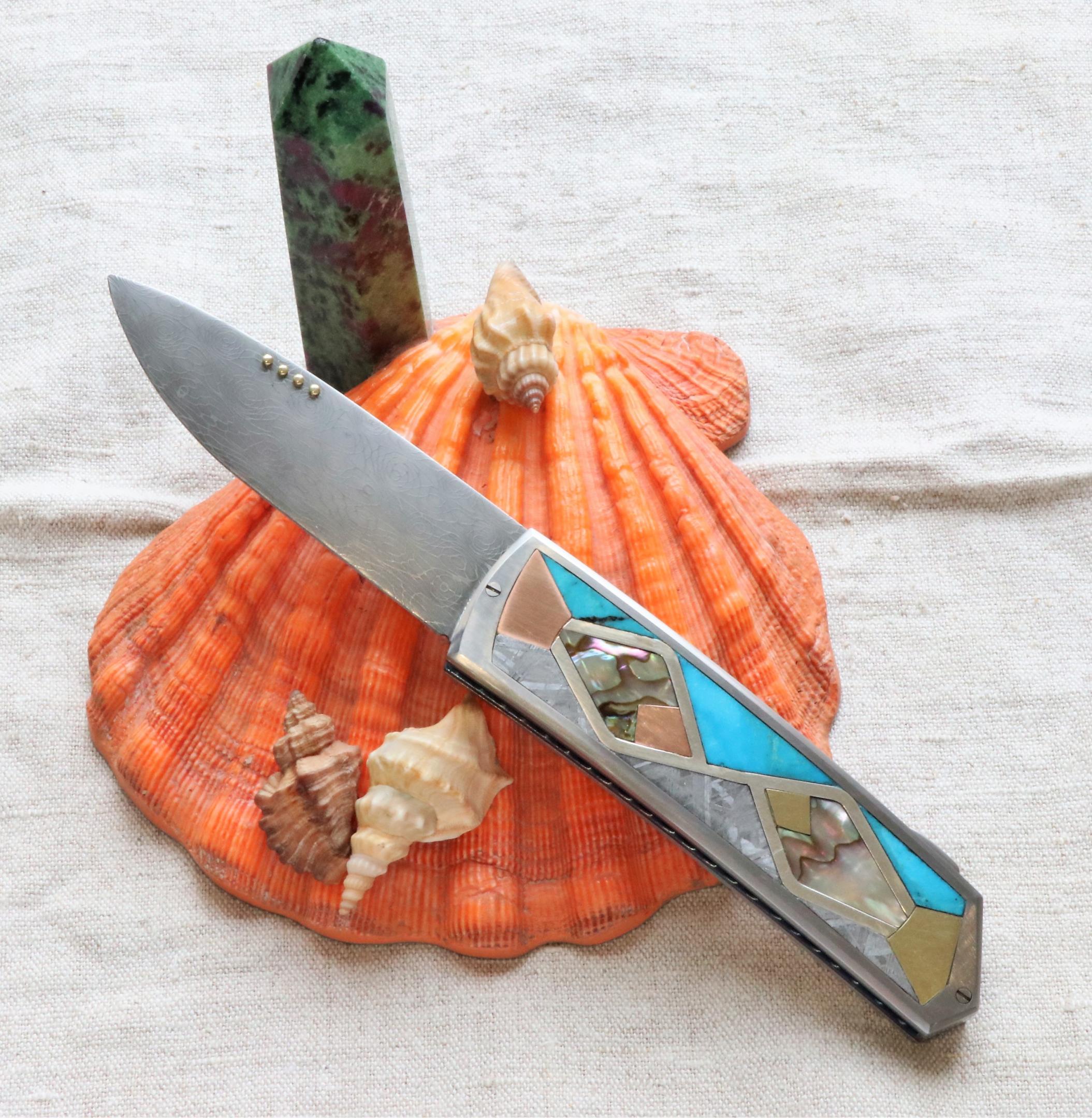
‘Pisces’ folding knife by Josef Rusňák. The 78 mm blade is Mike Norris Damask, the handle is RWL34,
Mother of Pearl, Turquoise and Meteorite. Overall length is 180 when opened.

A fixed blade by Josef Rusňák. The 180 mm blade is Carbon Mosaic Damask, the handle is Mammoth
and Bronze.
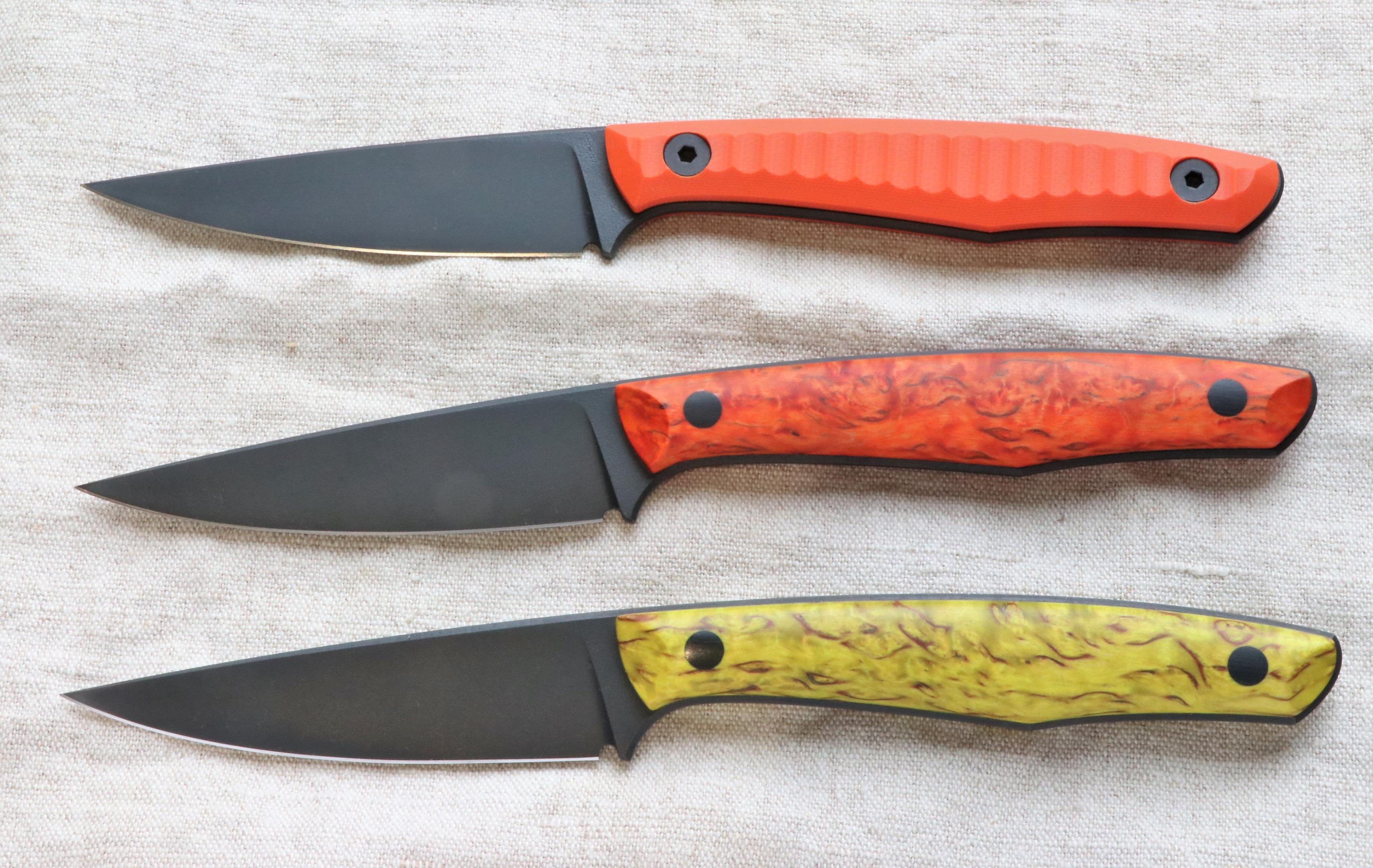
Three knives from the Dohnal brothers. The 85 mm blades are ELMAX DLC, the handles are G10 (top)
and stabilized birch.
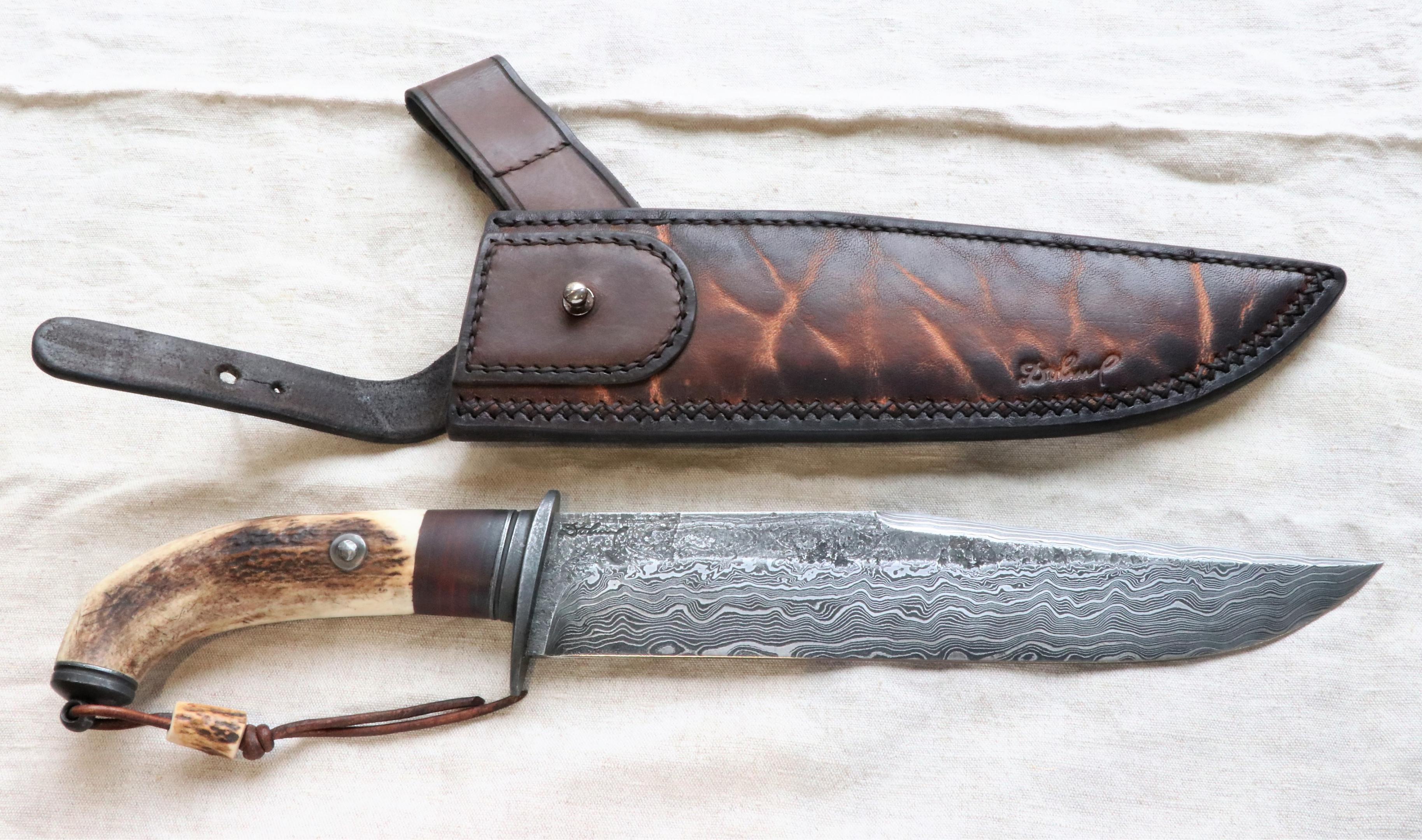
A hunting knife by Bratři Dohnalové. The 260 mm blade is Carbon Damask, the handle is Deer Antler
and Leather. Overall length is an impressive 405 mm.
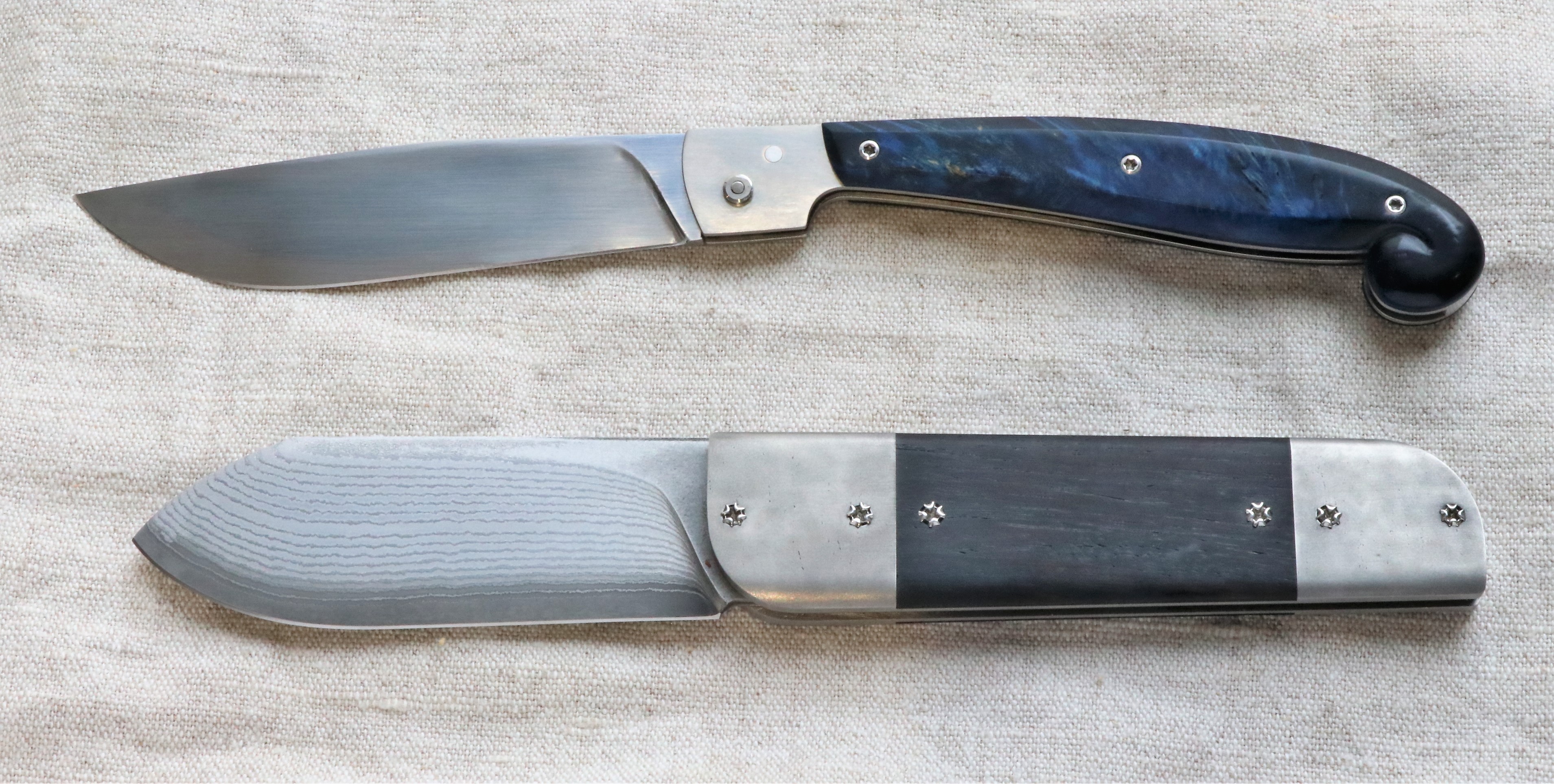
Filip Koruta (Filda’s Knives) showed these two folders. The top knife has a 110 mm RWL34 blade and
stabilised wood handle scales. The bottom knife has a 80 mm SWG10 blade and Ebony handle scales.
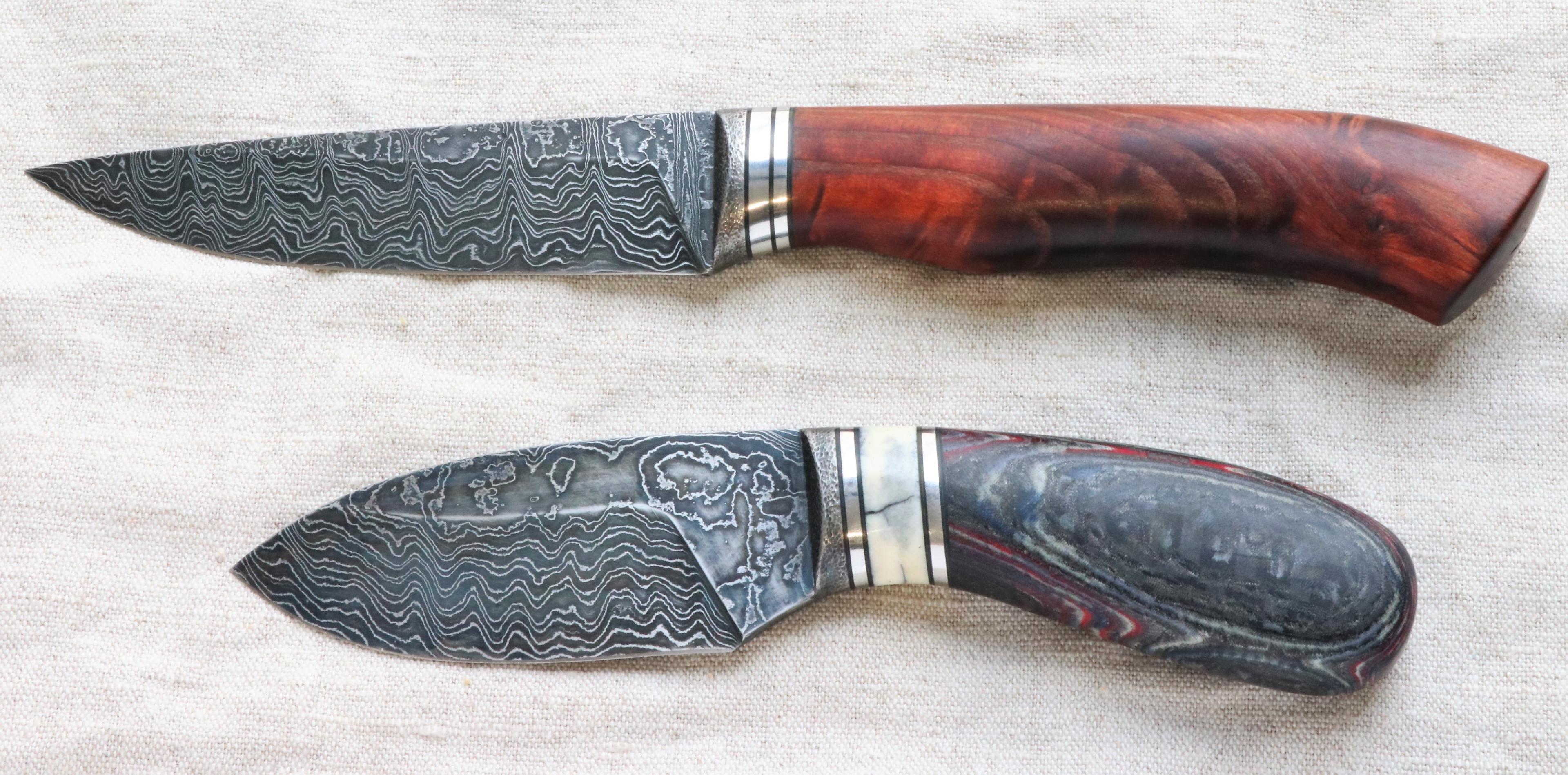
Two fixed blades by Tomáš Tomíček (TT Knives), both with a Carbon Damask blade. The upper knife has
a 106 mm blade and Sequoia handle, the lower knife has an 85 mm blade and Cratecarta handle.
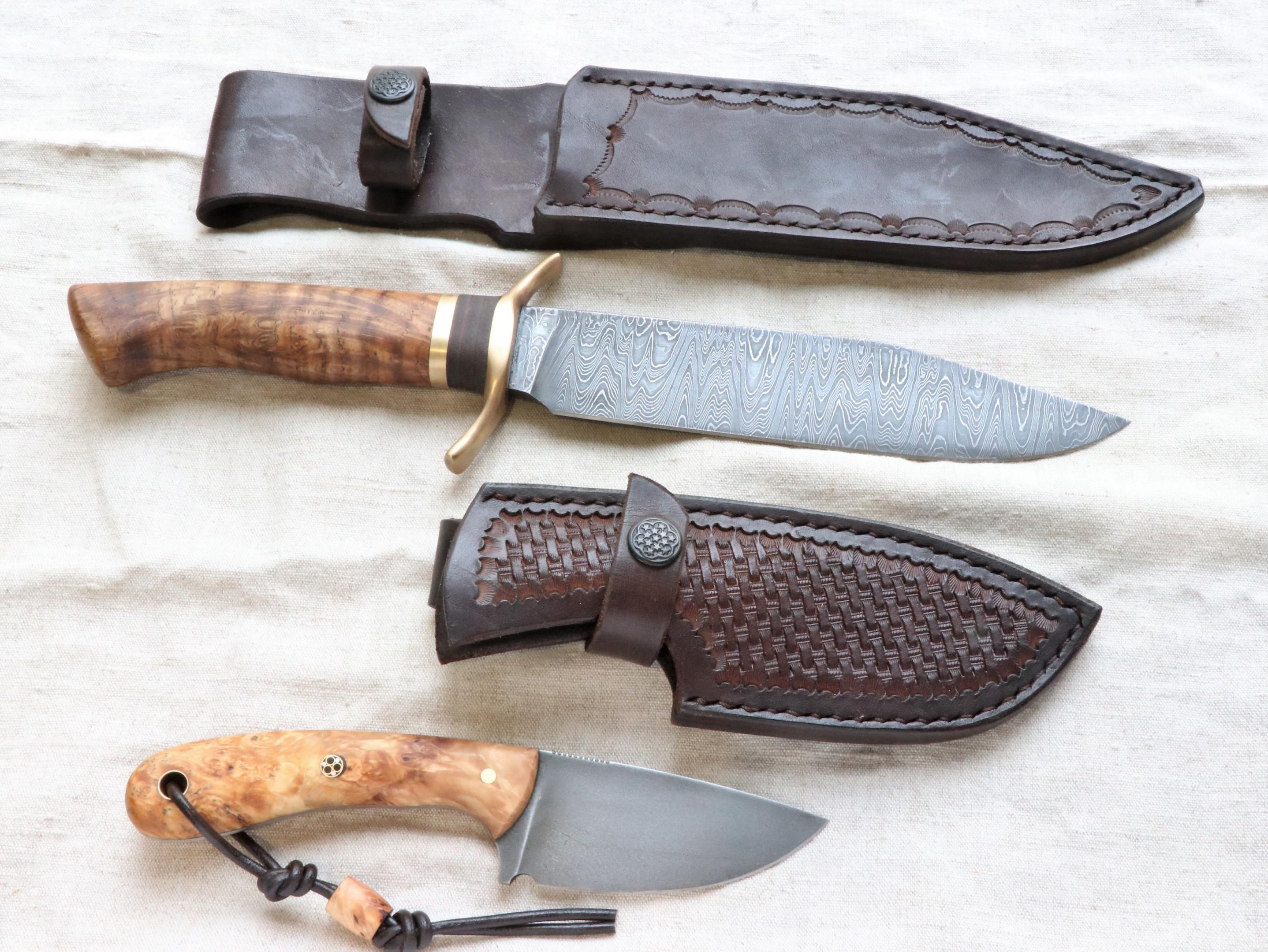

Two fixed blades by Miroslav Brosch. The upper knife has a 191 mm Carbon Damask blade and an oak
handle. The lower knife has a80 mm D2 blade and Walnut handle.
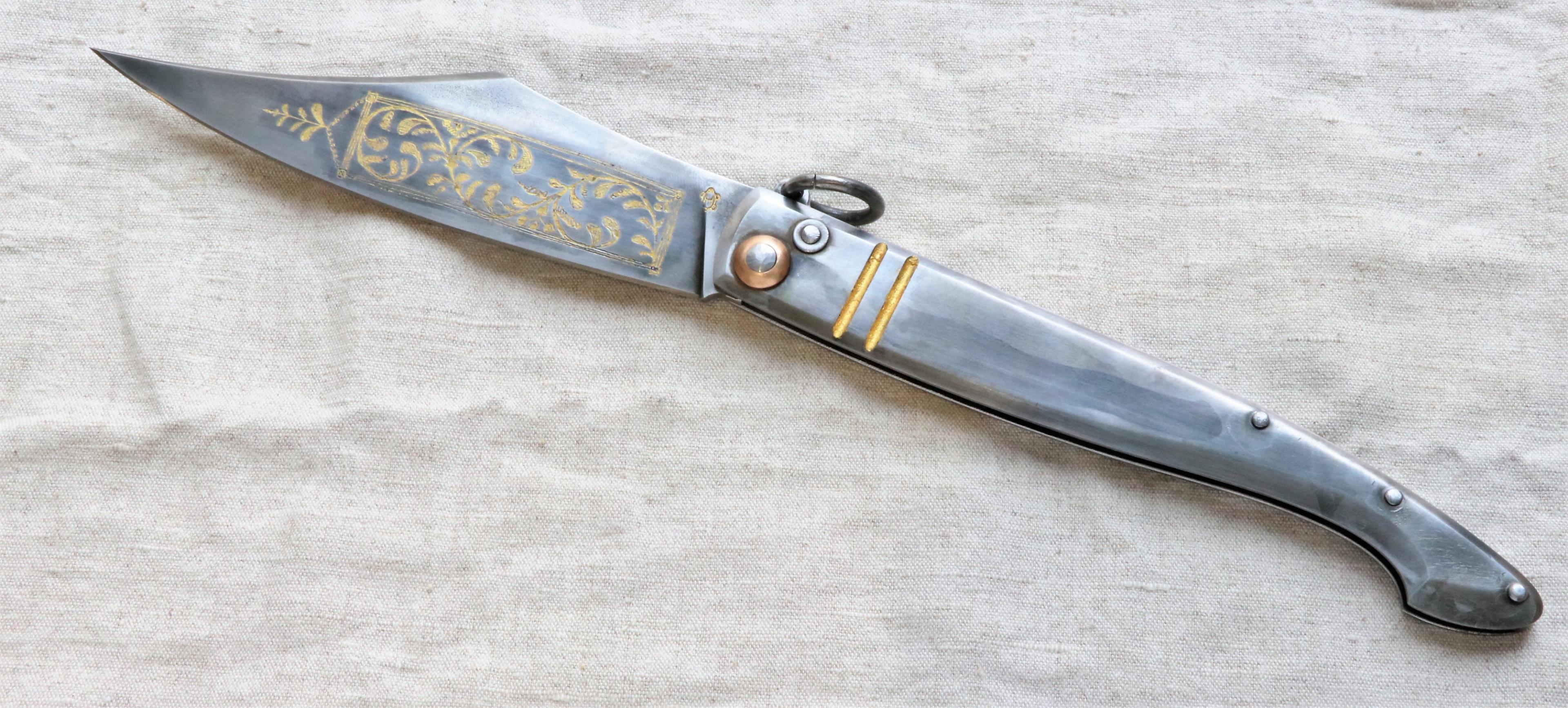
A folder by Jiří ‘Turtle’ Hrála. The 175 mm blade is K720, the handle is Carbon Steel. Overall length when
opened is 385 mm.
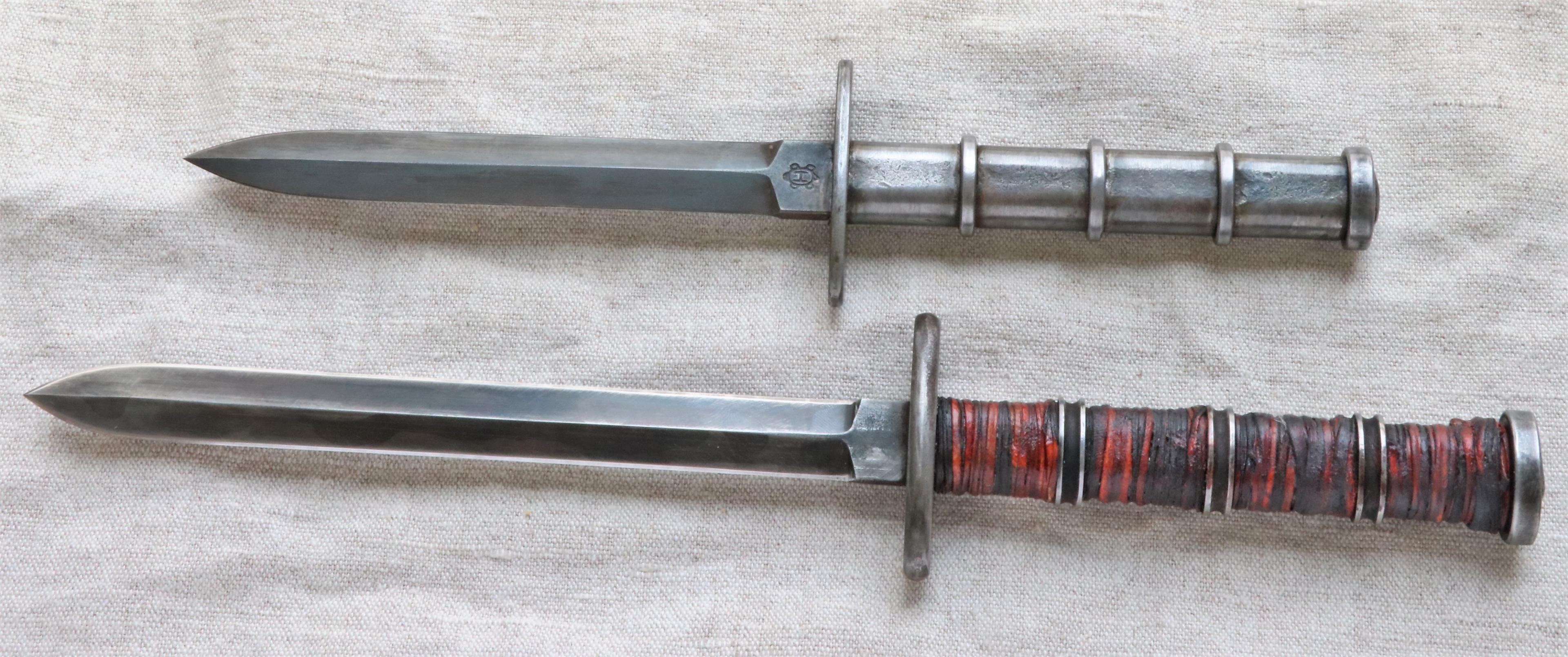
Two daggers by Jiří ‘Turtle’ Hrála, both made from spring steel. The top one has a 162 mm blade and a
steel handle, the lower one has a 164 mm blade and a Leather thong handle.
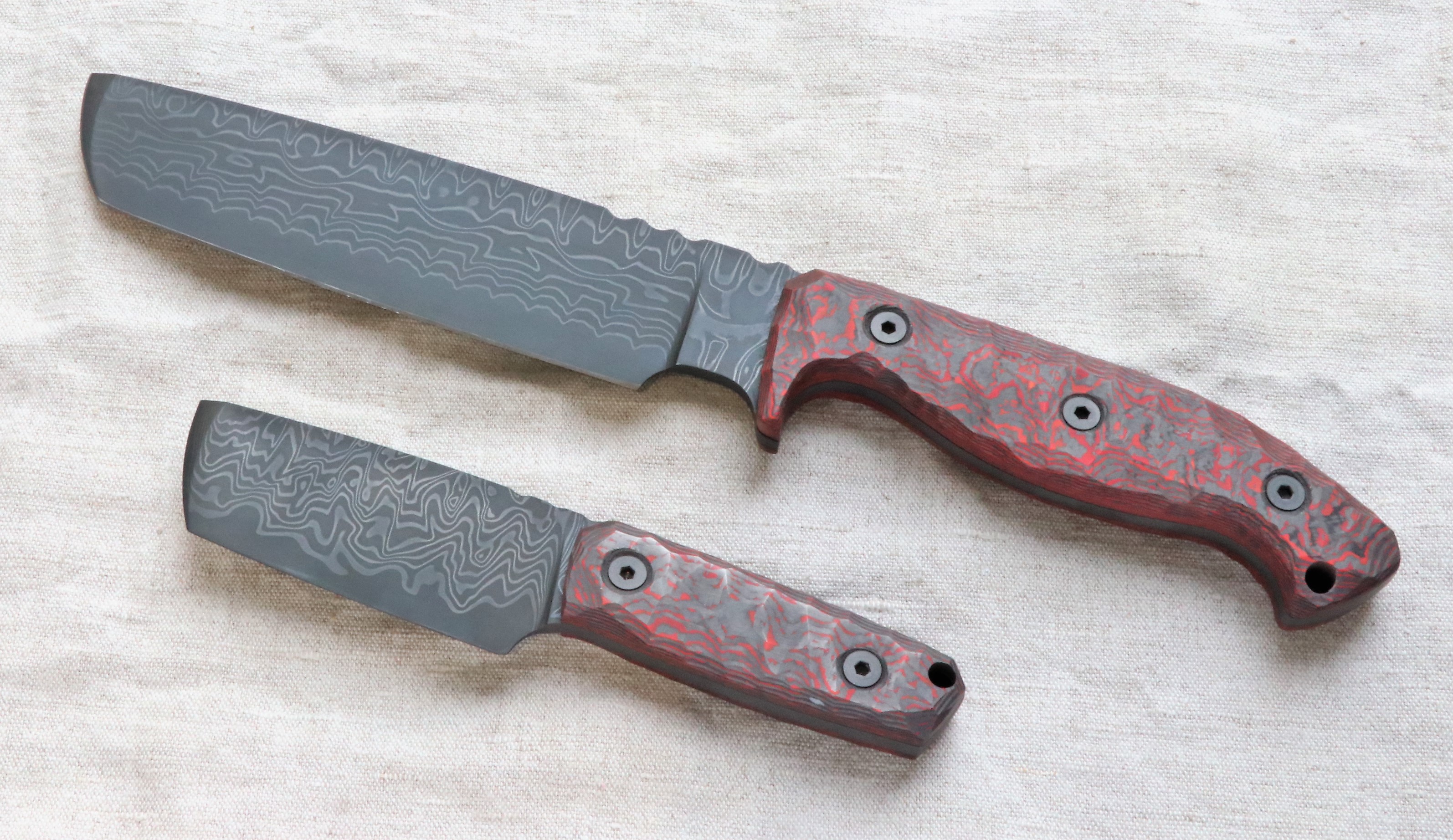
Two fixed blades by Futuron Forge, with Futuron Forge Stainless Damask blades and Fat Carbon
handle scales.
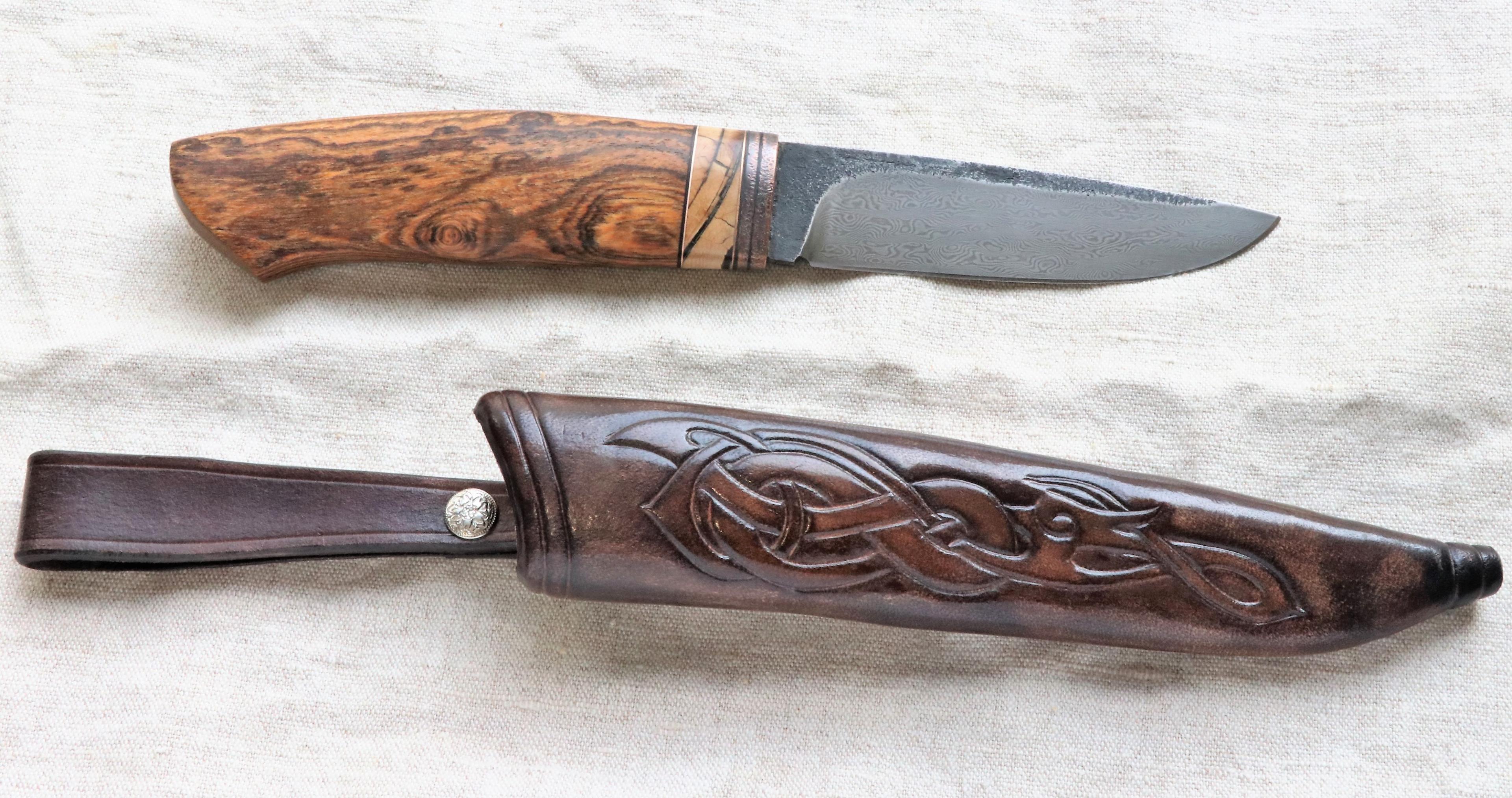
A fixed blade by Arkadij Debakyan. The 100 mm blade is Carbon Damask Wootz, the handle is Mokote.
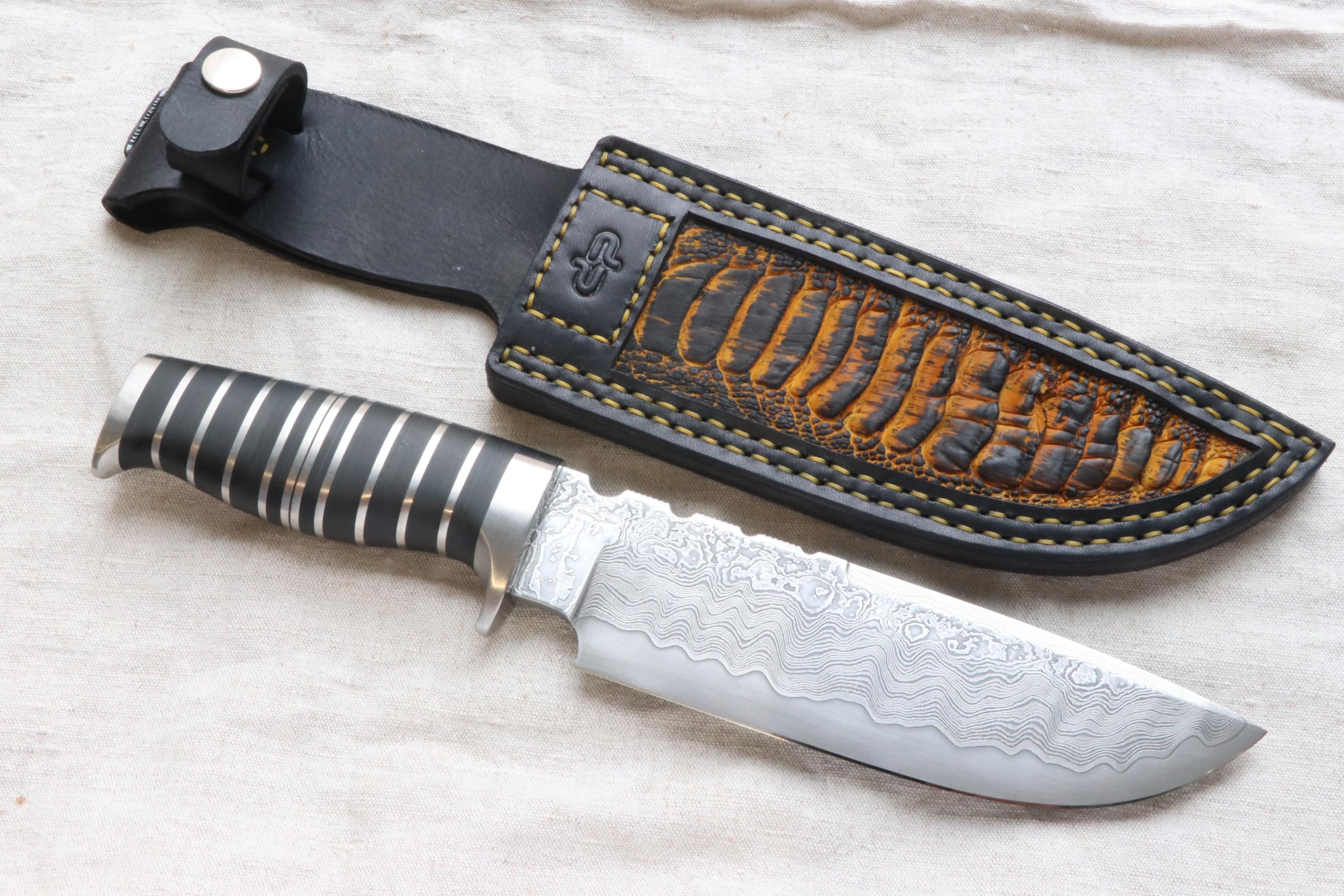
A fixed blade by David Posselt. The 180 mm blade is Elmax and Stainless Sandwich, the handle is
Titanium and Carbon Composite. Overall length is 295 mm.